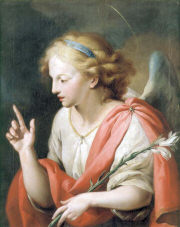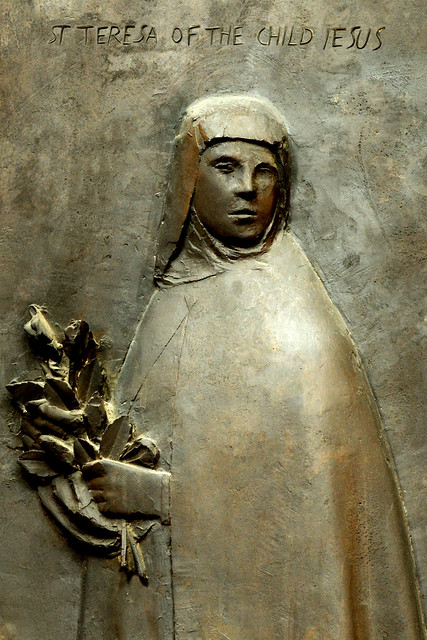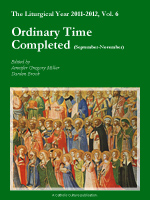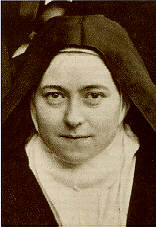September 30th: Remembering James Dean 57 Years Later

The 30th of September, 1955, will forever be remembered as the day cinema lost one of its most prodigal stars in James Dean, who tragically perished in a car crash 28 miles northeast of Paso Robles, California. It was approximately 5.45 pm on a Friday evening, when the star’s newly acquired Porsche 500 Spyder that he nicknamed ‘The Little Bastard’ cannoned into a 1950 Ford Sedan, driven by college student Donald Gene Turnupseed, who only saw Dean’s car at the last second at the junction of US 466 and Highway 41.
Dean was only 24 years of age, his climb to stardom just beginning after three successful ventures, East of Eden (1955), Rebel Without A Cause (1955), and Giant (1956). It was Nicholas Ray’s Rebel, the story of disaffected youth Jim Stark that made the young Dean a cultural icon, but East of Eden is widely considered to be the picture that truly displayed his tenuous, tortured approach to the craft of acting.
Born at 2am in Byron Indiana, on February 8th, Dean was an only child who, without the company of another sibling at home, began to develop a vivid imagination from an early age, his mind providing him with the playmate a young child yearns for in their tender years. He was very close to his mother, Mildred Wilson, who was said to be “the only person capable of understanding him”. Harrowingly for the fledgling Dean, Mildred died of cancer on July 14, 1940, when he was just 9 years old. Tragedies such as these are frequent occurrences in the lives of those who operate in the acting circle, and the anguish Dean suffered was undoubtedly one of the reasons why he gravitated towards acting, giving him the opportunity to purge himself of the pain he must have suffered daily, if only for a little while.

During his childhood Dean’s family had moved to Santa Monica, California when his father, Winton Dean, left his job as a farmer to become a dental technician, and it was at UCLA where he got his first real taste of theatre where he studied drama for one semester, appearing in a production of William Shakespeare’s Macbeth during his brief period of study. The adolescent Dean was never much of a scholar, possibly down to his lack of concentration on the theoretical aspects involved, another common trait of talented actors, who are compelled to be proactive psychophysically. Dean quit college to pursue acting full time and was soon taken on by an agent named Isabelle Draesmer, who secured Dean’s first television appearance in a Pepsi advert in 1950. The initial taste of exposure invigorated the aspiring actor, and in October 1951 he moved to New York City in the hope of realising his dreams.
New York City, with its towering skyscrapers, winding streets, and array of bright lights, promised to be a huge test of Dean’s nerve, and one that many a young dreamer had surrendered to at the first hurdle, but Dean’s character proved to be tough enough in his first tentative steps towards the big time, for his ambitions were as strong as oak. After a few television appearances, he was accepted into the world famous Actor’s Studio to study Method acting under the guidance of the legendary practitioner Lee Strasberg. Such a privilege was bestowed on only a small minority, and the Studio has a near impeccable reputation for producing some of the finest actors in history, Marlon Brando and Paul Newman to name but a few. Realising his fortune, Dean once referred to the institution as “the greatest school of the theatre”. After honing his craft, what followed is known by all those who have become arrested by the legend of James Dean, a man who lead a wild, fast life abounding with controversy, romance, and more importantly, personal acclaim.

Even today, 57 years after his demise, hordes of young people in many corners of civilisation still hold a candle to the actor, bound together by a powerful reverence to their hero, frozen in time in his Harrington jacket, stonewashed Levi’s, and dusty engineer boots with the glimmering silver buckle. In his lifetime he divided opinion, particularly amongst his colleagues, with Rock Hudson referring to him in less than flattering tones; “…he was a prick…he was selfish and petulant, and believed his own press releases.” On the other hand, Lee Strasberg highlighted his sadness at the passing of his student during a lecture at the Studio; “If there is anything in the theatre which I respond to more than anything else…it is the waste in the theatre, the talent that gets up and the work that goes into getting it up and getting it where it should be. And then when it gets there, what the hell happens with it? The senseless destruction, the senseless waste, the waste of talent…the waste of your lives…” Talent is the word which should always follow the memory of James Dean for eternity; it is the single most crucial thing that a performer should be remembered for in the hearts and minds of their fans, for men like James Dean gave so much of themselves to the lens of the camera, offering all the contortions and all the beauty they could muster for our entertainment. James Dean could have given so much more, and unfortunately it was the contribution of his mortality that was all he had left on that fatal day in 1955.

 The name of the archangel Michael means, in Hebrew, who is like unto God? and he is also known as "the prince of the heavenly host." He is usually pictured as a strong warrior, dressed in armor and wearing sandals. His name appears in Scripture four times, twice in the Book of Daniel, and once each in the Epistle of St. Jude and the Book of Revelation. From Revelation we learn of the battle in heaven, with St. Michael and his angels combatting Lucifer and the other fallen angels (or devils). We invoke St. Michael to help us in our fight against Satan; to rescue souls from Satan, especially at the hour of death; to be the champion of the Jews in the Old Testament and now Christians; and to bring souls to judgment.
This day is referred to as "Michaelmas" in many countries and is also one of the harvest feast days. In England this is one of the "quarter days", which was marked by hiring servants, electing magistrates, and beginning of legal and university terms. This day also marks the opening of the deer and other large game hunting season. In some parts of Europe, especially Germany, Denmark, and Austria, a special wine called "Saint Michael's Love" (Michelsminne) is drunk on this day. The foods for this day vary depending on nationality. In the British Isles, for example, goose was the traditional meal for Michaelmas, eaten for prosperity, France has waffles or Gaufres and the traditional fare in Scotland used to be St. Michael's Bannock (Struan Micheil) — a large, scone-like cake. In Italy, gnocchi is the traditional fare.
Patron: Against temptations; against powers of evil; artists; bakers; bankers; battle; boatmen; cemeteries; coopers; endangered children; dying; Emergency Medical Technicians; fencing; grocers; hatmakers; holy death; knights; mariners; mountaineers; paramedics; paratroopers; police officers; radiologists; sailors; the sick; security forces; soldiers; against storms at sea; swordsmiths; those in need of protection; Brussels, Belgium; Caltanissett, Sicily; Cornwall, England; Diocese of Pensacola-Tallahassee Florida; England; Germany; Archdiocese of Mobile, Alabama; Papua, New Guinea; Puebla, Mexico; San Miguel de Allende, Mexico; Sibenik, Croatia; Archdiocese of Seattle, Washington; Diocese of Springfield, Massachusetts.
Symbols: Angel with wings; dressed in armour; lance and shield; scales; shown weighing souls; millstone; piercing dragon or devil; banner charged with a dove; symbolic colors orange or gold.
The name of the archangel Michael means, in Hebrew, who is like unto God? and he is also known as "the prince of the heavenly host." He is usually pictured as a strong warrior, dressed in armor and wearing sandals. His name appears in Scripture four times, twice in the Book of Daniel, and once each in the Epistle of St. Jude and the Book of Revelation. From Revelation we learn of the battle in heaven, with St. Michael and his angels combatting Lucifer and the other fallen angels (or devils). We invoke St. Michael to help us in our fight against Satan; to rescue souls from Satan, especially at the hour of death; to be the champion of the Jews in the Old Testament and now Christians; and to bring souls to judgment.
This day is referred to as "Michaelmas" in many countries and is also one of the harvest feast days. In England this is one of the "quarter days", which was marked by hiring servants, electing magistrates, and beginning of legal and university terms. This day also marks the opening of the deer and other large game hunting season. In some parts of Europe, especially Germany, Denmark, and Austria, a special wine called "Saint Michael's Love" (Michelsminne) is drunk on this day. The foods for this day vary depending on nationality. In the British Isles, for example, goose was the traditional meal for Michaelmas, eaten for prosperity, France has waffles or Gaufres and the traditional fare in Scotland used to be St. Michael's Bannock (Struan Micheil) — a large, scone-like cake. In Italy, gnocchi is the traditional fare.
Patron: Against temptations; against powers of evil; artists; bakers; bankers; battle; boatmen; cemeteries; coopers; endangered children; dying; Emergency Medical Technicians; fencing; grocers; hatmakers; holy death; knights; mariners; mountaineers; paramedics; paratroopers; police officers; radiologists; sailors; the sick; security forces; soldiers; against storms at sea; swordsmiths; those in need of protection; Brussels, Belgium; Caltanissett, Sicily; Cornwall, England; Diocese of Pensacola-Tallahassee Florida; England; Germany; Archdiocese of Mobile, Alabama; Papua, New Guinea; Puebla, Mexico; San Miguel de Allende, Mexico; Sibenik, Croatia; Archdiocese of Seattle, Washington; Diocese of Springfield, Massachusetts.
Symbols: Angel with wings; dressed in armour; lance and shield; scales; shown weighing souls; millstone; piercing dragon or devil; banner charged with a dove; symbolic colors orange or gold.
 St. Gabriel's name means "God is my strength". Biblically he appears three times as a messenger. He had been sent to Daniel to explain a vision concerning the Messiah. He appeared to Zachary when he was offering incense in the Temple, to foretell the birth of his son, St. John the Baptist. St. Gabriel is most known as the angel chosen by God to be the messenger of the Annunciation, to announce to mankind the mystery of the Incarnation.
The angel's salutation to our Lady, so simple and yet so full of meaning, Hail Mary, full of grace, has become the constant and familiar prayer of all Christian people.
Patron: Ambassadors; broadcasting; childbirth; clergy; communications; diplomats; messengers; philatelists; postal workers; public relations; radio workers; secular clergy; stamp collectors; telecommunications; Portugal; Archdiocese of Seattle, Washington.
Symbols: Archangel; sceptre and lily; MR or AM shield; lantern; mirror; olive branch; scroll with words Ave Maria Gratia Plena; Resurrection trumpet; shield; spear; lily; symbolic colors, silver or blue.
St. Gabriel's name means "God is my strength". Biblically he appears three times as a messenger. He had been sent to Daniel to explain a vision concerning the Messiah. He appeared to Zachary when he was offering incense in the Temple, to foretell the birth of his son, St. John the Baptist. St. Gabriel is most known as the angel chosen by God to be the messenger of the Annunciation, to announce to mankind the mystery of the Incarnation.
The angel's salutation to our Lady, so simple and yet so full of meaning, Hail Mary, full of grace, has become the constant and familiar prayer of all Christian people.
Patron: Ambassadors; broadcasting; childbirth; clergy; communications; diplomats; messengers; philatelists; postal workers; public relations; radio workers; secular clergy; stamp collectors; telecommunications; Portugal; Archdiocese of Seattle, Washington.
Symbols: Archangel; sceptre and lily; MR or AM shield; lantern; mirror; olive branch; scroll with words Ave Maria Gratia Plena; Resurrection trumpet; shield; spear; lily; symbolic colors, silver or blue.
 Our knowledge of the Archangel Raphael comes to us from the book of Tobit. His mission as wonderful healer and fellow traveller with the youthful Tobias has caused him to be invoked for journeys and at critical moments in life. Tradition also holds that Raphael is the angel that stirred the waters at the healing sheep pool in Bethesda. His name means "God has healed".
Patron: Blind; bodily ills; counselors; druggists; eye problems; guardian angels; happy meetings; healers; health inspectors; health technicians; love; lovers; mental illness; nurses; pharmacists; physicians; shepherds; against sickness; therapists; travellers; young people; young people leaving home for the first time; Archdiocese of Dubuque, Iowa; Archdiocese of Seattle, Washington.
Symbols: Staff; wallet and fish; staff and gourd; archangel; young man carrying a staff; young man carrying a fish; walking with Tobias; holding a bottle or flask; symbolic colors, gray or yellow.
Our knowledge of the Archangel Raphael comes to us from the book of Tobit. His mission as wonderful healer and fellow traveller with the youthful Tobias has caused him to be invoked for journeys and at critical moments in life. Tradition also holds that Raphael is the angel that stirred the waters at the healing sheep pool in Bethesda. His name means "God has healed".
Patron: Blind; bodily ills; counselors; druggists; eye problems; guardian angels; happy meetings; healers; health inspectors; health technicians; love; lovers; mental illness; nurses; pharmacists; physicians; shepherds; against sickness; therapists; travellers; young people; young people leaving home for the first time; Archdiocese of Dubuque, Iowa; Archdiocese of Seattle, Washington.
Symbols: Staff; wallet and fish; staff and gourd; archangel; young man carrying a staff; young man carrying a fish; walking with Tobias; holding a bottle or flask; symbolic colors, gray or yellow.



 amalgami della cottura. Lo stesso vale per gran parte dei lavori di Bob Dylan. Avvicinandoci a Tempest, il desiderio è di scavare sotto il manto di ciò che appare. E ancora una volta setacciando i brani, l’inconfondibile voce spalmata si insinua sorniona, materializzando davanti al nostro orecchio scene, inquadrature ed emozioni terribilmente reali. E se il desiderio è appagato, è solo perché dall’altra parte c’è un artista settantunenne capace ancora di dire qualcosa di nuovo palleggiando con il vecchio. Dallo swing, nuovo e antico insieme, che apre l’album in poi, è un viaggio tra racconto e strumenti (superbo il banjo di Scarlett Town), di un Dylan storico (nel senso che indossa i panni dello storico) dei fatti e delle emozioni. L’orizzonte non promette molto, ma l’incedere è mai solo disperazione, è il refrain sotto testo. La ballata folk di quasi 14 minuti sulla sad, sad story della grande nave inghiottita da mari sharp and clear, è un attimo, ed è infinita (la sorella piccola dell’epica storia del pugile condannato ingiustamente). Il Titanic è affondato. Bob Dylan assolutamente no".
amalgami della cottura. Lo stesso vale per gran parte dei lavori di Bob Dylan. Avvicinandoci a Tempest, il desiderio è di scavare sotto il manto di ciò che appare. E ancora una volta setacciando i brani, l’inconfondibile voce spalmata si insinua sorniona, materializzando davanti al nostro orecchio scene, inquadrature ed emozioni terribilmente reali. E se il desiderio è appagato, è solo perché dall’altra parte c’è un artista settantunenne capace ancora di dire qualcosa di nuovo palleggiando con il vecchio. Dallo swing, nuovo e antico insieme, che apre l’album in poi, è un viaggio tra racconto e strumenti (superbo il banjo di Scarlett Town), di un Dylan storico (nel senso che indossa i panni dello storico) dei fatti e delle emozioni. L’orizzonte non promette molto, ma l’incedere è mai solo disperazione, è il refrain sotto testo. La ballata folk di quasi 14 minuti sulla sad, sad story della grande nave inghiottita da mari sharp and clear, è un attimo, ed è infinita (la sorella piccola dell’epica storia del pugile condannato ingiustamente). Il Titanic è affondato. Bob Dylan assolutamente no".
















